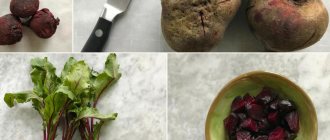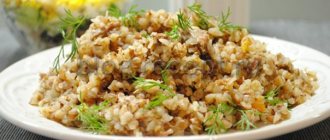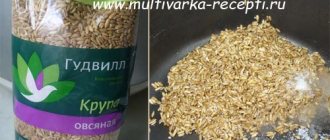A multicooker is an indispensable assistant in the kitchen. It is especially in demand when you need to cook a product that takes a lot of time to prepare. The housewife is freed from the need to monitor the water level or periodically stir the food so that it does not burn. To prepare many side dishes and cold appetizers, especially in winter, you need beets, brought to readiness. This vegetable requires a long cooking time. If you know how to cook beets in a slow cooker, you can save time and effort by directing them to more important or enjoyable things.
How long to cook a vegetable in a slow cooker: whole and in pieces
The multicooker is popular among housewives. And this is not surprising, since it is with its help that many dishes can be prepared quickly and simply. This did not spare beets either. Everyone knows that it takes a lot of time to cook a root vegetable in a pan. But with a kitchen assistant, this problem is easily solved.
In order to prepare a healthy vegetable in its entirety, the “Stew” function is used. It will take no more than 40 minutes for the product to be completely cooked and not lose its beneficial properties.
When cutting beets into pieces, you will need a more limited period of time - no more than 30 minutes. Moreover, the same “Quenching” function is used.
How to cook in a slow cooker
| Ingredients | Quantity |
| beet - | 2-3 pcs. |
| water - | 1-1.5 l |
| Cooking time: 45 minutes | Calorie content per 100 grams: 49 Kcal |
It takes at least 2 hours to boil beets in a saucepan. In this case, it is necessary to constantly increase or decrease the intensity of the fire. And the water constantly boils away and constant monitoring of its level is required. With a multicooker, time is saved significantly, since there is no need to control the process.
The process of preparing beets is very simple:
- Wash the root vegetable very well under cold running water;
- Place in a multi-cooker bowl and fill with water so that the beets are completely submerged in liquid;
- Set the device to the “Extinguishing” mode, which will take 40 minutes and leave;
- After that, take out the beets, cool, peel off the top peel and you can start preparing them further.
Ingredients
- Beets – 2-5 pieces
- Water – 2 liters
How to steam beets in a Redmond multicooker
In this case, we will learn how to cook beets in a Redmond multicooker. But using this example, you can cook it in any multicooker that has a “Steam” program. Each multicooker model is equipped with a steamer basket. It is on this that we will cook the beets. First, let's rinse it thoroughly. Choose small or medium root vegetables. It is important that they are approximately equal in size. Place the beets in the basket. If it is too large, cut it in half. Pour about two liters of water into the multicooker bowl. Place the basket on the bowl. Close the lid. Select the “Steam” program from the menu. How long to cook beets in a slow cooker? The average cooking time is 40 minutes. Therefore, we set the time indicator to 40 minutes. Press the “Start” button. We are waiting for the end of the program.
After the signal, open the lid of the multicooker. We check the readiness of the beets by piercing the root vegetable with a wooden stick or a thin knife. If the beets are ready, remove them. If not, then set the same mode again and the cooking time is 10-20 minutes, depending on the readiness of the beets. The fact is that this vegetable is prepared differently each time. Here it is better for housewives to observe the process themselves, adjusting the cooking time. Small beets usually take 30 minutes to boil completely in a slow cooker; medium ones usually take 40 minutes. If you have large beets, they will cook for about an hour; to speed up the time, cut the beets into pieces. Young beets cook faster than old ones, but as a rule this is also due to the fact that small beets are small in size.
Now you know how to cook beets in a slow cooker. It's very simple.
Please note that in most multicooker models, the countdown on the “Steam” program begins not from the moment you press the “Start” button, but from the moment the water boils. The “Steam” program can be replaced by the “Cooking” or “Soup” program. In this case, the water will definitely boil and steam will come out. This is how easy it is to cook beets in a slow cooker.
Cooking beets always takes a lot of time, and in the process it can steam the entire kitchen, which not everyone likes. But with the advent of the multicooker, any cooking has become a pleasure. This unit knows exactly how to cook beets quickly.
The finished vegetable seems to be even much tastier. And how many things can be prepared from it! Salads, vinaigrettes, borscht, beetroot pancakes and many other dishes.
Let's get down to business and find out how to cook beets in a slow cooker, and how many minutes this wonderful device will cook them.
Steamed beets
In order to use this method and type of multicooker, you will need:
- beets - 5 pieces of approximately the same average size;
- purified water – 2 liters.
Cooking time – 40 minutes.
Calorie content – 49 kcal.
Detailed Process:
- Wash the root vegetable thoroughly under cool tap water;
- Place it in a special steaming basket;
- Pour the required amount of water into the multicooker bowl and place the basket on top;
- If you suddenly find a vegetable that is too large, you should divide it into two parts using a sharp knife;
- The lid of the multicooker must be closed;
- Set the device to the “Steam” mode and press the “Start” button;
- Cooking time will take no more than 40 minutes;
- After a characteristic sound signal, open the lid and check the readiness of the root vegetable with a toothpick. If necessary, you can further extend the cooking time by 20 minutes.
Let's use a pressure cooker
A multicooker-pressure cooker is a very functional device that allows you to cook food even faster than a regular multicooker. Thanks to the high pressure pumped by the device, root vegetables will be cooked in just 20 minutes.
Rinse the beets well, place in a bowl, pour 1 tbsp. water (approximately 160 ml), activate the “Soup” mode and set the time to 20 minutes.
If your device has a “Steam” function, then you can cook beets this way. Place clean root vegetables on a metal stand, pour in 160 ml of water and cook for 20 minutes. When the vegetables are cooked, do not forcefully release the pressure - let the beets cook a little.
Recipes for stewed beets
Stewed beets are very good to eat during fasting. The dish can also be consumed either on its own or as a complement to meat.
First
For the most economical and simplest option, you will need the following list of components:
- medium-sized beets - 1 piece;
- onions – 1 piece;
- garlic – 4 cloves;
- tomato paste – 4 tablespoons;
- refined vegetable oil - 3 tablespoons;
- Add table salt and ground black pepper based on personal taste.
Cooking time – 55 minutes.
Calorie content – 106 kcal.
How to prepare this version of stewed beets:
- The onion head must be peeled, washed well, and then cut into small bars;
- Pour the required amount of vegetable oil into the multicooker bowl and add the prepared onions. Set the appliance to the “Frying” mode and fry the vegetable until the characteristic golden color is formed;
- Also peel and chop the garlic using a sharp knife. Then add it to the onion and continue frying;
- Peel the beets with a knife and then chop them using a large grater. Send it also to the multi-cooker bowl;
- Pour the prepared amount of tomato paste over the vegetables. Also here you need to add the necessary spices and mix;
- Set the “Stew” function on the multicooker and do not touch it for half an hour;
- After finishing the set mode, you can still keep the dish in the “Warming” mode for 10 minutes.
Second
Let's consider a more interesting and unusual option for preparing stewed beets. It will require:
- medium-sized beets - 3 pieces;
- apples (it is better to use the sour green variety) – 2 pieces;
- sour cream with minimal fat content – 100 ml;
- lemon – 1 piece;
- butter – 3 tablespoons;
- sugar – 2 tablespoons;
- a small amount of table salt.
Cooking time – 2 hours.
Calorie content – 128 kcal.
Detailed cooking process:
- The root crop is thoroughly washed in cold water. Then it must be steamed in a multi-cooker basket. It will take about 40 minutes;
- Cool the vegetable, peel and cut into medium-thick strips;
- Core the apples with seeds and cut into thin slices. Then sprinkle them with lemon juice;
- Place butter in the multicooker bowl and select the “Fry” function;
- Place the beets in a bowl and pour over freshly squeezed lemon juice;
- Then add the required amount of sugar and continue cooking, not forgetting to stir the mixture from time to time;
- After a few minutes, change the “Frying” function to “Stewing”, add sour cream, close the lid and leave for 1 hour;
- About 10 minutes before the end of the process, pour out the prepared apple slices.
About the benefits
Almost all the nutrients contained in raw vegetables are preserved when cooked, except for: ascorbic acid, folic acid and vitamin B5. Nevertheless, supporters of traditional medicine claim that after boiling, the root vegetable becomes healthier than fresh. This is due to the fact that:
- the concentration of nitrates decreases by approximately 50-80%;
- the amount of coarse fiber decreases - boiled beets, unlike raw ones, can be consumed by people with problems with the digestive system.
Most of the substances contained in the vegetable can withstand heating up to 110-190°C, so they are preserved during cooking, although their concentration decreases somewhat. The table below will give an idea of the benefits for the body of some substances in the composition of a heat-treated product.
Table - Composition and benefits of boiled beets
| Component | Importance for the body |
| Beta-carotene (converted to vitamin A in the body) | — Improves visual function; - exhibits antioxidant properties; — accelerates regeneration processes; - supports immunity |
| Vitamin B2 | — Strengthens the immune system; - promotes better absorption of iron; - regulates the functioning of the thyroid gland; - serves the functioning of the nervous system; - supports visual function |
| Vitamin B6 | — Has a beneficial effect on the cardiovascular system; - regulates the balance of sodium and potassium; - prevents the development of urolithiasis; - improves depression |
| Vitamin E | — Shows the properties of the strongest antioxidant; - improves the condition of blood vessels, skin, hair, nails; — serves the process of hormone production; - lowers blood glucose levels; - increases performance and mental activity; - maintains the vital state of the muscular system |
| Vitamin PP | — Serves redox processes; - supports the metabolism of proteins and carbohydrates; - activates the production of gastric juice; - exhibits vasodilating properties; - serves the functioning of the nervous system |
| Iodine | — Stimulates brain activity; - reduces irritability, prevents stressful conditions; - supports the process of growth and development (in children); – improves the condition of hair, skin, nails, teeth |
| Iron | — Provides oxygen saturation of tissues; - serves the conduction of nerve impulses; - supports thyroid function; - improves brain function; - strengthens the immune system |
| Potassium | — Regulates water balance; - normalizes heart rate; - serves the process of conducting nerve impulses; - improves brain function by providing the organ with oxygen; - maintains the vital condition of soft tissues |
| Magnesium | — Supports the function of the neuromuscular system; — normalizes the functioning of the endocrine and cardiovascular systems; - helps maintain dental health; – prevents calcium deposits in the gallbladder and kidneys |
| Calcium | — Serves blood clotting processes; - participates in the functioning of the neuromuscular system; - exhibits antiallergic and anti-inflammatory properties; – stimulates certain enzymes and hormones |
| Copper | — Serves the processes of converting iron into hemoglobin; - participates in the production of elastin and collagen |
| Phosphorus | — Supports the function of the nervous system; - participates in the regulation of acid-base balance; - helps maintain healthy bones and teeth; — serves protein synthesis — necessary for the normal course of metabolic processes |
How to deliciously bake vegetables
Beets turn out to be incredibly tasty; to prepare them you don’t need anything other than food foil and a slow cooker. This version of the vegetable can be used as an independent dish, especially when it comes to the dietary period, or as an additional ingredient for various salads.
In order to bake root vegetables, you will need:
- beets – 1 piece of large size (up to 600 grams).
Cooking time – 1 hour.
Calorie content – 42 kcal.
Beet baking process:
- Wash the beets thoroughly to remove dirt and dry them a little;
- Trim the tail, but do not touch the other side, since all the juice will leak out during the cooking process;
- Lay out the foil on a flat surface and place the root vegetable on it;
- Wrap in such a way that the edges of the foil are directed upward to retain the released juice inside;
- Place in the multicooker bowl, set the “Bake” function for 1 hour;
- After the specified period, remove the beets and leave to cool. Then unwrap and peel.
Beetroot soup with kefir - try preparing this dish on a hot summer day.
Read how to cook fluffy pancakes using whey.
Read how to cook juicy chicken wings in a slow cooker.
Choosing the right one
Cunning sellers know how to disguise even an expired product as a delicacy. Therefore, you should not be surprised if, after long wanderings around the market, you bring home fodder beets instead of table beets. To avoid making mistakes when choosing a root vegetable for salad or borscht, follow the following four recommendations.
- Size matters. Forage beets are usually large. Therefore, whenever possible, give preference to small or medium-sized beets.
- Attention to color. The peel of forage varieties is lighter, and the table vegetable has a dark and rich color.
- We feel the surface. High-quality root vegetables are always smooth to the touch. There are no pits, no warts, no numerous mustaches on it. It's absolutely smooth.
- We avoid rot. Even a small rotten spot on the skin of a beet should make you pass up a low-quality product.











